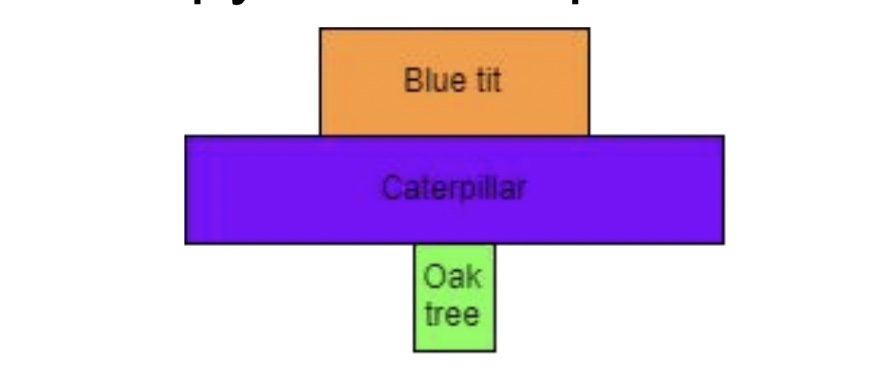Trophic Levels in an Ecosystem
0.0(0)
Card Sorting
1/20
There's no tags or description
Looks like no tags are added yet.
Study Analytics
Name | Mastery | Learn | Test | Matching | Spaced |
|---|
No study sessions yet.
21 Terms
1
New cards
What does a food chain show?
It describes the feeding relationships between organisms and the resultant stages of biomass transfer.
2
New cards
What are trophic levels?
The stages in a food chain
3
New cards
How are trophic levels represented?
Trophic levels are represented by numbers, starting from 1. After 1, trophic levels are numbered according to far along the organism is in the food chain.
4
New cards
What is trophic level 1?
Plants and algae which make their own food (through photosynthesis) - called producers.
5
New cards
What is trophic level 2?
Herbivores which eat producers - called primary consumers.
6
New cards
What is trophic level 3?
Carnivores that eat herbivores - called secondary consumers.
7
New cards
What is trophic level 4?
Carnivores that eat other carnivores - called tertiary consumers.
8
New cards
What is an apex predator?
A carnivore with no predators
9
New cards
How do decomposers break down dead matter?
Decomposers release enzymes which catalyse the breakdown of dead material into smaller molecules. Soluble small food molecules then diffuse into the microorganisms.
10
New cards
What is biomass?
The dry mass of all of the living organisms in an area.
11
New cards
Why is dry mass used for biomass?
Because the wet mass varies as the volume of water in the organism varies.
12
New cards
How do you calculate the efficiency of biomass transfer?
efficiency = (energy transferred / total energy available) × 100
13
New cards
What percentage of the incident energy from light for photosynthesis do producers transfer?
1%
14
New cards
What percentage of the biomass from one trophic level is transferred to the level above it in feeding?
Approximately 10%
15
New cards
Why are biomass transfers not 100% efficient?
* Egestion (removal of faeces)
* Excretion (removal of waste products e.g. urine containing urea and water)
* Respiration (loss of carbon dioxide and water) in which large amounts of glucose are used
* The production of inedible bones and shells
* Excretion (removal of waste products e.g. urine containing urea and water)
* Respiration (loss of carbon dioxide and water) in which large amounts of glucose are used
* The production of inedible bones and shells
16
New cards
How does the efficiency of biomass transfers affect the number of trophic levels in a biomass pyramid?
The less efficient the transfers, the fewer trophic levels and the fewer organisms in higher trophic levels.
17
New cards
What is a biomass pyramid?
A pyramid that shows the total dry mass of organisms at each trophic level Trophic level 1 is at the bottom of the pyramid
18
New cards
What is a pyramid of numbers?
A pyramid of numbers shows the number of organisms at each trophic level
19
New cards

Why is this pyramid of numbers not pyramid shaped?
Pyramids of numbers don’t take size and mass of organisms into account.
20
New cards

Calculate the efficiency of this biomass transfer from the flowers to the caterpillar
efficiency = (energy transferred / total energy available) × 100 Total energy available = 800 kJ + 4000 kJ = 4800 kJ Energy transferred = 800 kJ 800/4800 x 100 = 16.67%
21
New cards
why are producers important
they synthesis complex molecule glucose by photosynthesis
source of all biomass in a community
source of all biomass in a community